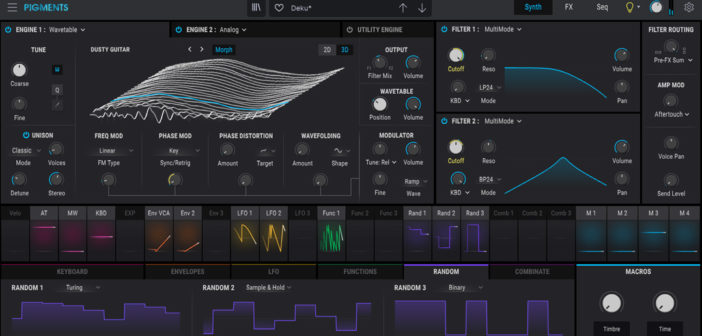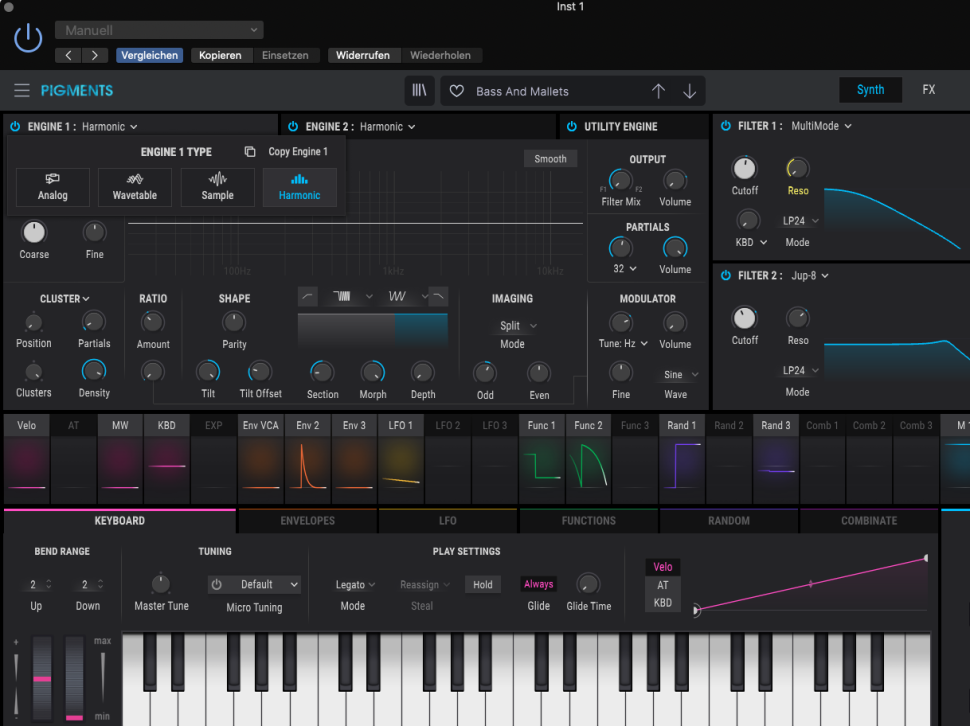
Along with the nine different filter types available already, Arturia have added their Jupiter 8 modelled filter from their Jup‑8 V plug‑in. The three engines can be sent to two multimode filters in varying amounts. These two engines are joined by the new ‘Utility Engine’, which allows you to beef up your sound with two noise sources and a flexible sub‑oscillator. There are two sound engines, which can be set to one of four modes: Analog, Wavetable, Sample and now Harmonic. Pigments’ core workflow and interface haven’t changed. Pigments 3 continues the add‑on approach with an additive oscillator engine (the ‘harmonic oscillator’), a ‘utility engine’ for flexible noise and sub‑oscillator duties, four new audio effects, 64 new wavetables, a Jupiter 8 filter, and 200 new presets. It also improved upon the sequencer, and added some new effects and a Buchla‑style low‑pass gate filter. Pigments 2 added a granular sample engine to the list of oscillator types. Upon its release, Pigments was a sophisticated wavetable and virtual analogue synth with dual multimode filters, flexible effects, a sequencer, a complex yet intuitive modulation system, and even MPE support. By contrast, Pigments is completely new, embracing the advantages of digital, rather than emulating old analogue hardware. Pigments is a departure for Arturia, who had previously focused on software recreations of famous synthesizers.

But will Arturia’s strategy of rapid‑fire free releases keep Pigments at the top? This is an interesting release strategy for a virtual instrument, where it’s more common to release major versions every three or four years. I reviewed the original Pigments in May 2019 and here we are, just over two years later, checking out Pigments 3.

Arturia’s soft synth gets bigger and better.įor the second time in as many years, Arturia have released a major update for their flagship software instrument.


 0 kommentar(er)
0 kommentar(er)
